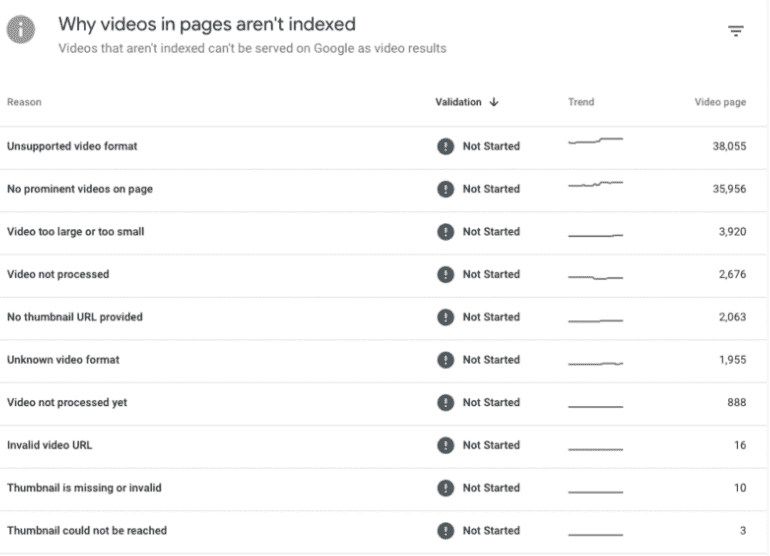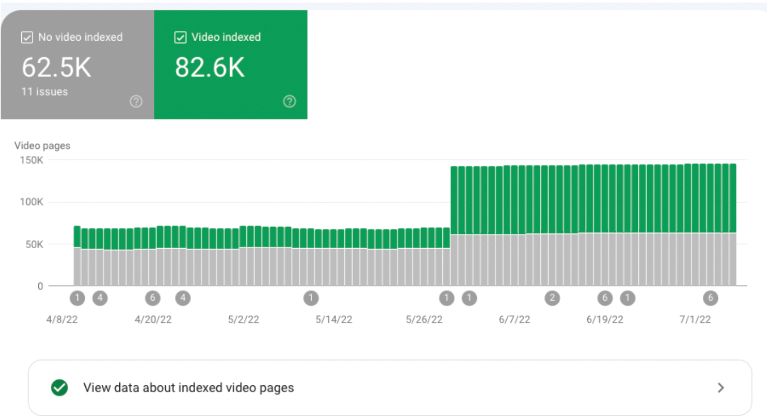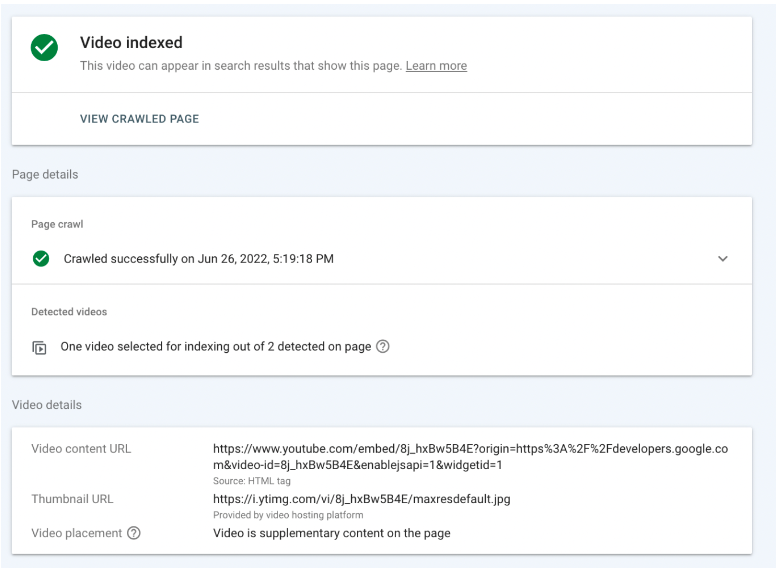

You probably already know that videos hosted on a website or platforms like YouTube can appear in Google Search Engine Ranking Pages (SERPs) for search queries and fit into the larger SEO strategy to achieve top search rankings. However, if you have been struggling to justify the amount of resources it requires to pull off video SEO correctly, measure its impact, and integrate it within your marketing strategy — there’s good news for you.
Until recently, e-commerce businesses hoping to leverage the potential of visually connecting with their buyers found themselves shortchanged. As there were no native Google tools to measure the impact of using video on a webpage, creators were left to guess what factors needed to be improved. A report released in July this year known as the Video Indexing Report now changes that.
This feature makes submitting & measuring the overall impact of a video on the performance of the web page easier, thereby allowing creators to understand the ROI of their efforts and get real-time insights on things they can do to improve their content’s visibility.
We’re going to take you through Google’s recent introduction of Video Indexing and how it can be a game changer for E-commerce SEO. If you have been waiting for a sign to put those video SEO efforts into hyper-gear and Google is your first target, this is it.
Google Search Console’s Video Indexing Report Feature
The massive influx of content in recent years has made sorting and judging content quality extremely challenging for search engines — so much so that Google is excluding many web pages from its index. Videos are no different.
Naturally, this can be a huge problem when you are trying to rank videos you presumably allocated many resources to.
The Video Indexing report is meant to be the answer to these woes. With the tool, you will be able to see whether Google has indexed your videos and, if not, why.
Suppose you have a fitness gear website with many embedded videos in blog posts, and service pages, showing unboxing of fitness equipment, tutorials, and instruction videos. With this Google Video Indexing Report, you will know:
- Whether Google has been able to identify the presence of videos on a webpage;
- Which videos were successfully identified and which weren’t;
- What is stopping Google from indexing specific videos?
If you make fixes as per #3, you can track the impact and see if it fixes indexation issues.
Before the Update Versus After the Update
Before the Update, Google generated one report – the Rich Results Report. This Report provided information related to videos marked up with structured data. This could include standardized pages like recipe blogs containing ingredients, cooking times, calories, etc., or product pages with price, availability, and ratings.
This Rich Results Report is not going anywhere. Google is merely adding a second Report.
Issues That Could Prevent a Video From Being Indexed
The Report will flag one or more of the following issues that prevent videos embedded in pages or across other platforms from being indexed:
- Unsupported video format
- No prominent videos on the page
- Video too large or too small
- Video not processed
- No thumbnail URL provided
- Unknown video format
- Invalid video URL
- Thumbnail is missing or invalid
- Thumbnail could not be reached

How Does It Help Businesses?
If you have been following digital trends and noticing how platforms like Instagram favor accounts that post video content — you probably already realize that the future is video.
As the video SEO space becomes more competitive and changes dramatically, video best practices will need to be at the forefront to achieve the top spot.
The video indexing report will assign quality indicators for each video and hold those up to markers like video size, thumbnail format, video quality, and video formats — allowing some objective indication of how Google may perceive a video’s quality.

How to See the Report and What It Shows You
When you have videos (whether indexable or not), you can see the Video Indexing Report to the left of the navigation bar in your Google Search Console. If Google cannot detect a video on your website, you won’t be able to see this Report. It will show you the following:
- Number of indexed pages that contain a video that Google has been able to index;
- Details about the indexed video;
- Number of indexed pages that contain a video that Google has been able to find but not able to index and why;
- If a page is not indexed, then Google will not find videos on those pages. These won’t be included in the Report.
URL Inspection Tool – What Is It and Why It Matters
As part of the Update, Google has improved the URL inspection tool. Now, you will be able to check whether a specific page has been indexed or not. Once you enter the URL in the inspection tool and that page has a video, then Google will;
- Give you a snapshot of the thumbnail URL, video URL, etc.
- Point out URL-related issues with it, such as lack of thumbnail URL or invalid video URL.
You need to use stable URLs that are unique for each video if you want Google to index and track your videos.

Why Does This Update Matter?
The indexing Report and enhanced URL tool will help you improve Google’s chances of indexing and showing your videos to users looking for content similar to yours. This will lead to the following benefits:
- Videos generate traffic for your website. If a user sees your video on YouTube or your social media platforms, they are likely to visit your website too.
- Videos increase the average time spent on a web page per user. This can affect SEO performance, as Google may interpret more engagement time as an indicator of better content quality. Videos improve conversion rates and SEO.
Not Sure About Adding Videos to Your Content?
Streamable video ads and other forms of video content are among the must-haves for your content strategy.
For example, brands with shoppable video ads for YouTube know how beneficial it is to tack on product images beneath the video ad to lead the viewer to the page. But, the reach of this ad will be minimal if Google cannot detect and index it.
When you create videos that resonate with your target audience, you are building threads of trust that will drive them to purchase from you. But you must make Google happy too, so it’s best to make the most of this Update.
The Bottom Line
Brands that don’t use video marketing to connect with buyers will lose out in the game of visibility. Google understands this, so they rolled out this Indexing Report tol help you carve a presence in its searches. Trends suggest that video content will account for over 80% of all web traffic by the end of this year — including search. So this Report couldn’t have come at a more opportune time.
It may seem tedious, but if you want to future-proof your digital marketing success, prioritizing video will be critical in your journey. The video indexing report tool can be a great tool in your arsenal to enhance your eCommerce SEO strategy.
At Vizion Interactive, we have the expertise, experience, and enthusiasm to get results and keep clients happy! Learn more about how our SEO Audits, Local Listing Management, Website Redesign Consulting, and B2B digital marketing services can increase sales and boost your ROI. But don’t just take our word for it, check out what our clients have to say, along with our case studies.

![YMYL Websites: SEO & EEAT Tips [Lumar Podcast] YMYL Websites: SEO & EEAT Tips [Lumar Podcast]](https://www.lumar.io/wp-content/uploads/2024/11/thumb-Lumar-HFD-Podcast-Episode-6-YMYL-Websites-SEO-EEAT-blue-1024x503.png)

